.




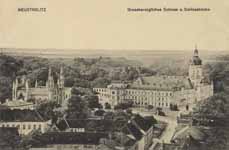




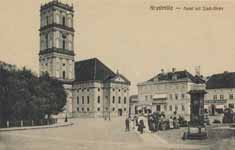
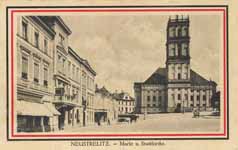

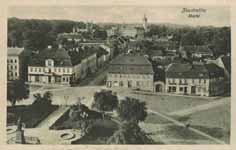


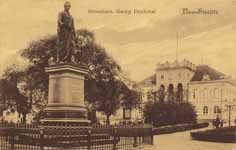


Neustrelitz
Neustrelitz (German pronunciation: [nɔʏˈʃtʁeːlɪts]) is a town in the Mecklenburgische Seenplatte district in the state of Mecklenburg-Vorpommern, Germany. It is situated on the shore of the Zierker See in the Mecklenburg Lake District. From 1738 until 1918 it was the capital of the duchy of Mecklenburg-Strelitz. From 1994 until 2011 it was the capital of the district of Mecklenburg-Strelitz.
The name "Strelitz" represents an old Slavic word for "shooter" (compare Russian strelets - "musketeer" and Polish strzelic - "to shoot").[2]
History
The village of Strelitz was first mentioned in 1278. It grew to a small town in the following centuries. In the 17th century Strelitz was a part of the duchy of Mecklenburg-Güstrow, which ceased to exist after the death of the last duke in 1695. Afterwards the new duchy of Mecklenburg-Strelitz was established (1701). This small duchy contained the present-day district and an exclave around Ratzeburg, which is today situated in Schleswig-Holstein.
In 1712 the castle and the town of Strelitz burnt down. After this disaster the duke and his family lived on their hunting lodge at the lake called Zierker See (Zierk lake) to the northwest of Strelitz. Around this place the new town of Neustrelitz (New Strelitz) was constructed. It became the official capital of Mecklenburg-Strelitz in 1736.
Neustrelitz remained the ducal seat until 1918 and was the capital of the Free State of Mecklenburg-Strelitz from 1918 to 1933. In 1934 it was merged with Mecklenburg-Schwerin to the Gau of Mecklenburg.
The ancient town of Strelitz continued to exist after the fire of 1712; it was a small village, which was suburbanised by Neustrelitz in 1931.
When the Red Army entered the town in 1945, 681 people committed suicide.[3]
Sights and monuments
The city centre is characterised by Baroque architecture. Its heart is the Marktplatz (Market Square), with the Stadtkirche (city church), built in 1768–1778 and the opposite Rathaus (Town Hall), built in 1841 by Friedrich W. Buttel, a disciple of Karl Friedrich Schinkel.
The Baroque Schloß (palace) was destroyed in 1945, but the palace gardens (Schloßgarten) still exist. Worth seeing are the 18th-century Orangerie (from orange), initially used as a summerhouse, the Schloßkirche (Palace Church) built in 1855–1859 in English Neo-Gothic style, the Neoclassic Hebe temple (with a replica of a statue of the goddess Hebe), and the Louise Temple, built in 1891 in the shape of a Greek temple to house the tomb of Queen Louise of Prussia, born Princess of Mecklenburg-Strelitz.
There is a small lake, Glambeck See, where one can swim in summer in a protected area and have lunch at a restaurant overlooking the lake.
Lake Großer Fürstenseer
Friedrich Wolf
War memorial Franco-Prussian War in Strelitz-Alt
Entertainment
Since the year 2000 the city has been hosting the popular Immergut Festival, attended by almost 5000 visitors each year.
International relations
See also: List of twin towns and sister cities in Germany
Neustrelitz is twinned with:
Russia Chaykovsky, Russia
Poland Szczecinek, Poland
Finland Rovaniemi, Finland
References
^ "Bevölkerungsstand der Kreise, Ämter und Gemeinden in Mecklenburg-Vorpommern 31.12.2010" (in German). Statistisches Amt Mecklenburg-Vorpommern. 6 July 2011.
^ Room, Adrian (2006). Placenames of the world: origins and meanings of the names for 6,600 countries, cities, territories, natural features, and historic sites (2 ed.). McFarland. p. 265. ISBN 9780786422487. Retrieved 2011-03-17. "The basic name is of Slavic origin and means '(settlement of the) archers,' from Old Slavic strela, 'arrow.'"
^ Lakotta, Beate (2005-03-05). "Tief vergraben, nicht dran rühren" (in German). SPON. Retrieved 2010-08-16.
From Wikipedia, All text is available under the terms of the GNU Free Documentation LicenseGermany
